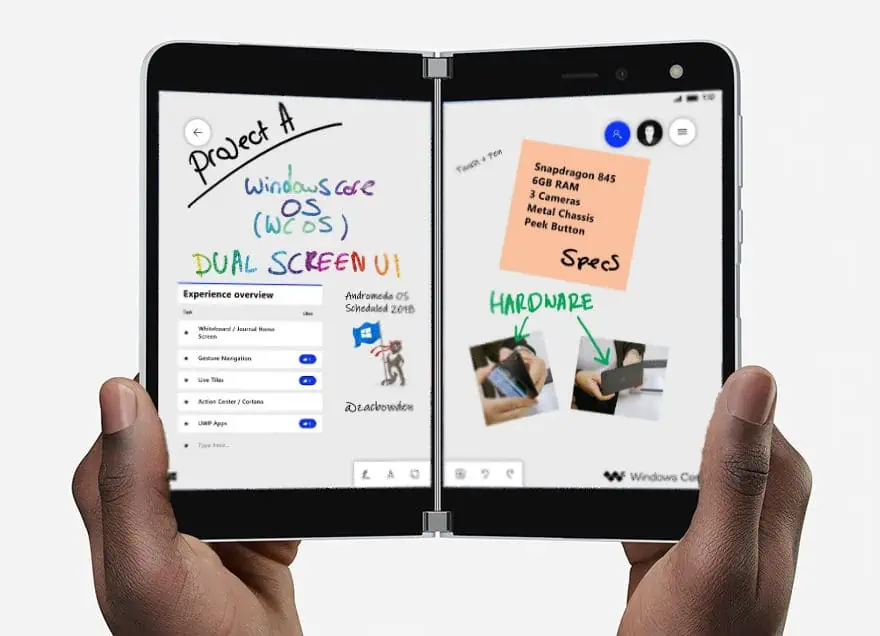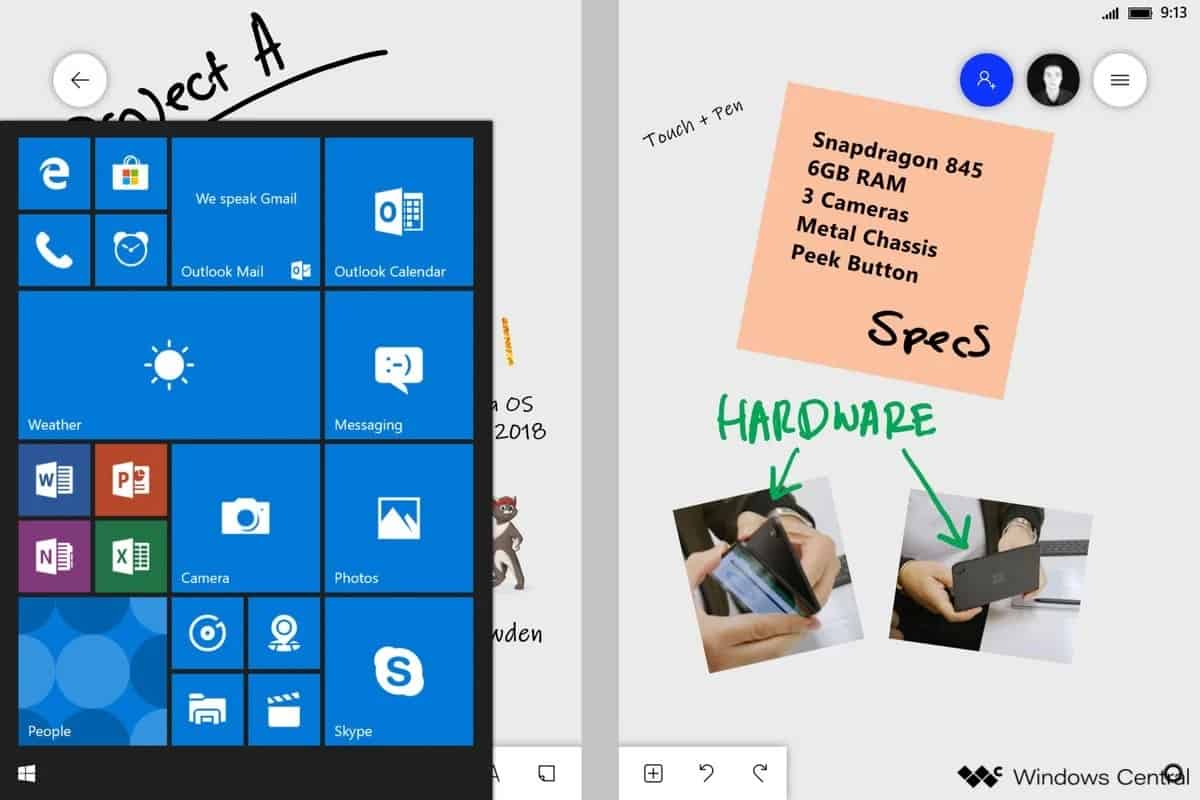Leak reveals Microsoft developed Android-powered Surface Duo in secret from failing Windows Core OS team
3 min. read
Published on
Read our disclosure page to find out how can you help MSPoweruser sustain the editorial team Read more

Microsoft likes to pretend the reason the Surface Duo took so long to come to market was due to difficulty getting the complex hardware just perfect, but long time readers will know it was actually the software, in particularly the Windows-based operating system which was the issue.
In a recently published expose Windows Central revealed the development of the Andromeda OS went so badly wrong that Microsoft secretly turned to an external company to develop an Android-based operating system for the hardware.
The WC revealed that the development of the Surface Duo started in late 2014 to early 2015, and that the device was heavily inspired by the Courier, being a Windows-powered device with a home screen based on a pen-based journaling app, but which could nevertheless be connected to a monitor to run a desktop-like experience.
In 2016 work on the dual-screened Andromeda device proper started, and Microsoft decided to create a lightweight, legacy-free and adaptable OS, which led to the decision to develop Windows Core OS. Windows Core OS would be paired with an adaptable shell, CShell, and Polaris for the desktop shell, which later became Windows 10X.
AndromedaOS was based on a page-based journaling app called Jamdani, which would also be the home screen of the device, to which users could attach virtual sticky notes, images, and files, and annotate on them. This is of course similar to the Courier concept. The device would nevertheless still have a Start Menu and Action Centre, integrated with Cortana.
This was when everything went wrong.
Windows Central writes:
However, it became clear rather quickly that this project would take a while, and not be without issue. It turns out that modernizing and modularizing the Windows core and shell experiences isn’t an easy task, and the project would soon fall behind schedule. WCOS itself wouldn’t be ready for self hosters and engineers to actively test on until sometime in 2017.
The device was meant to launch in Fall 2018, but the WC reports that the device suffered constant issues and delays, with no sign of catching up, and that at weekly meetings the Senior Leadership Team grew tired and eventually postponed the project indefinitely.
The Surface team, however, wanted to sell a phone-based Surface device and still wanted to ship the Surface Duo.
The WC writes:
At some point in late 2018 or early 2019, the decision was made to turn Andromeda into an Android device. This was kept very quiet, as most people who worked on the Windows version had no idea this decision had been made.
Microsoft contracted Movial to create the Surface Duo OS, and ported several Windows drivers to Android to allow the hardware to be reused. Microsoft also made several adjustments to the hardware, including removing the external camera and replacing the metal shell with glass and plastic, resulting in the device we see today.
Much of the engineers working on Andromeda OS eventually moved to Windows 10x, but we know of course that project has been equally cursed.
It seems pretty clear that, despite being the world’s biggest software company, Microsoft’s initial overconfidence was its undoing, and that the project was ultimately saved by rival Google.
Do our readers think Microsoft ever had a chance? Let us know below.









User forum
0 messages